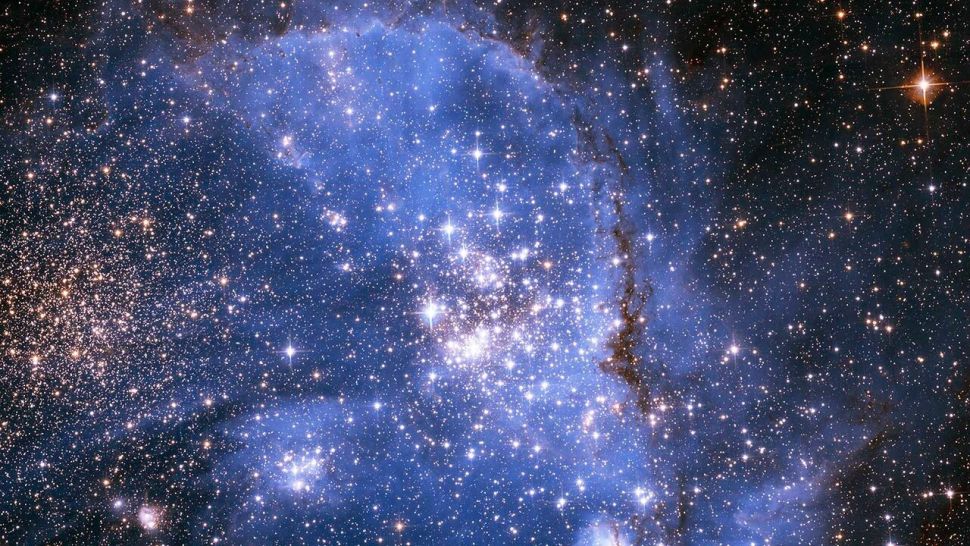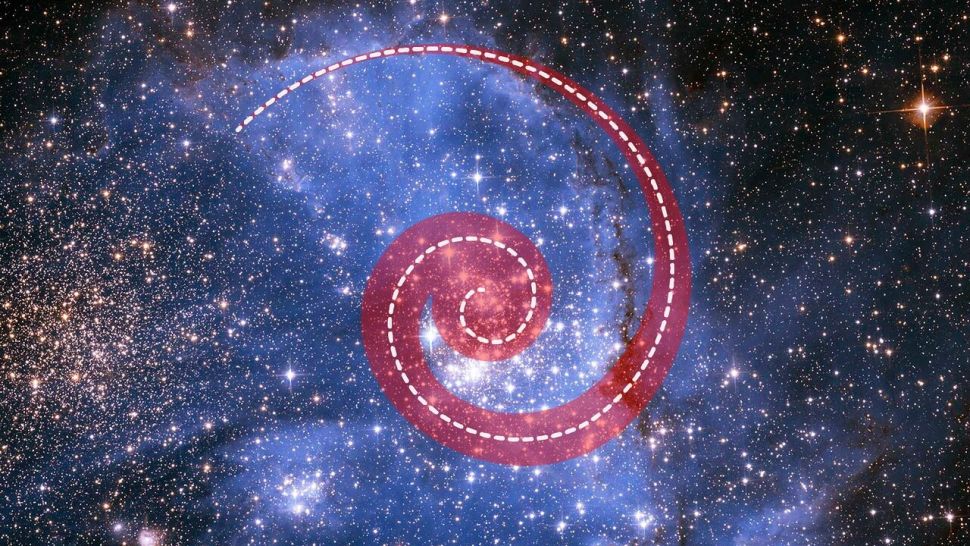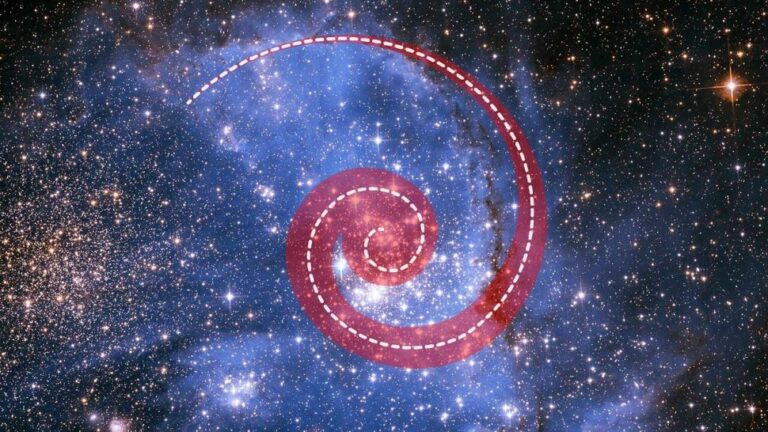The Hubble Space Telescope observes a spiral galaxy nearby where stars are forming.
A stream of stars and gas are being fed to the heart of a stellar nursery in the Small Magellanic Cloud, fueling intense star formation.
Stars and gas have been seen hurtling towards the center of a vast, oddly shaped stellar nursery in the nearby Small Magellanic Cloud by NASA‘s venerable satellite observatory.
As shown in the recently published image taken by the Hubble Space Telescope, astronomers believe that the outer arm of this spiral of stars and gas may be supplying a river-like flow of gas that is fostering star formation in the stellar nursery known as NGC 346. When the 13.8 billion-year-old galaxy was only a few billion years old and going through a stellar “baby boom” of intensive star formation, the discovery may offer crucial hints as to how stars were created.
“The tools that shape the cosmos are stars. Although we do not fully comprehend how stars originate, without them life as we know it would not exist “In a statement, research leader and astronomer Elena Sabbi from the Space Telescope Science Institute in Baltimore, which oversees Hubble, stated.

She said, “We have a number of models that make predictions, some of which are inconsistent. Because these are the principles that we require to interpret what we see in the early cosmos, we are interested in finding out what controls star formation.
NGC 346 has a diameter of only 150 light-years and is made up of star material with a mass of 50,000 suns. Astronomers have been baffled by the area’s rapid star production.
Because NGC 346 is housed in the Small Magellanic Cloud, which is about 200,000 light-years from Earth, astronomers are able to observe light that is more recent than that from galaxies farther away, which can provide information about the early universe. The dwarf galaxy, however, resembles early galaxies in several respects.
Similar to early galaxies that hadn’t yet been enriched with heavier elements by succeeding generations of stars going supernova, exploding and seeding space with atoms they formed during their lives, the Small Magellanic Cloud has a simpler chemical makeup than the Milky Way. The stars in the Small Magellanic Cloud are hotter and burn through fuel more quickly than stars in the Milky Way because of their chemical simplicity, which causes them to age more quickly than stars in our galaxy.
Nevertheless, the researchers found that star formation in the Small Magellanic Cloud continues similarly to how it does in the Milky Way, despite these changes.

Watching a star spiral
Astronomers used the Hubble Space Telescope and the Very Large Telescope (VLT) in northern Chile to study star formation in the Small Magellanic Cloud in two different ways.
Hubble was used by Sabbi and her team to track changes in star locations around the galaxy during an 11-year period. Since the stars travel at a pace of roughly 2,000 mph (3,200 kph), they move 200 million miles (320 million kilometers) or just over twice as far as the sun from Earth during the course of 11 years.
But from our vantage point 150 light-years away, this is still a very small distance, thus Hubble’s strength was required to detect and resolve these stars’ minute positional changes.
The Multi Unit Spectroscopic Explorer (MUSE) instrument of the VLT was used by a second team of astronomers, led by Peter Zeidler of the European Space Agency (ESA), to measure the stars’ radial velocity, or how rapidly a star is moving toward or away from the observer.
With the help of gas for star formation, a spiral of stars was visible using both observational techniques as they entered the center of NGC 346.
In the same statement, Zeidler remarked, “What was truly astonishing is that we employed two entirely different methodologies with separate facilities and, basically, we arrived to the same conclusion independently.” “With Hubble, you can see the stars, but with MUSE, we can also detect the velocity of the gas in the third dimension, and that supports the idea that everything is spiraling inwards,” says the researcher.
The importance of the spiral development to the creation of stars was also discussed by Zeidler.
A spiral is a pretty good, natural mechanism to feed star formation from the outside of the cluster into its core, he said. It’s the most effective method for stars and gas that are causing more star formation to migrate in that direction.
The team’s research was published Thursday (Sept. 8) in The Astrophysical Journal.
Source: SpaceCom
Astronomer using Hubble have found “young stars that are spiraling into the center of a massive cluster of stars in the Small Magellanic Cloud,” according to NASA‘s Goddard Space Flight Center.
Do not forget to share your opinion with us to provide you with the best posts !




0 Comments